The resurgence of alabaster kitchen cabinets has revolutionized contemporary interior design, offering an ethereal blend of sophistication and practicality. These luminescent beauties have transcended their historical roots to become a cornerstone of modern kitchen aesthetics.
As homeowners increasingly gravitate towards designs that marry functionality with visual appeal, alabaster cabinets have emerged as an exemplary choice that satisfies both criteria. Their versatile nature allows them to seamlessly integrate into various design schemes, from minimalist contemporary to classic traditional styles.
The intrinsic characteristics of alabaster cabinets, with their translucent qualities and subtle variations in tone, create an ambiance that’s both welcoming and refined.
Alabaster Kitchen Cabinets
Whether you’re undertaking a complete kitchen renovation or simply seeking to refresh your existing space, understanding the nuances of alabaster cabinetry can help you make an informed decision that will stand the test of time while maintaining its aesthetic appeal.
1. Classic White Alabaster Cabinets
The quintessential white alabaster cabinet represents the perfect marriage of timeless elegance and modern sophistication. These cabinets feature a pure, crisp white finish that brightens any kitchen space while maintaining a subtle depth that distinguishes them from standard white cabinetry. The surface exhibits a gentle luminosity that catches and reflects light in ways that can make even modest-sized kitchens feel more spacious and inviting.
What sets classic white alabaster apart is its remarkable ability to resist yellowing over time, a common issue with traditional white finishes. The material’s natural properties help maintain its pristine appearance, requiring minimal maintenance beyond routine cleaning. This durability, combined with its timeless appeal, makes it an excellent investment for homeowners looking to enhance their property’s value.
2. Cream Alabaster with Gold Hardware
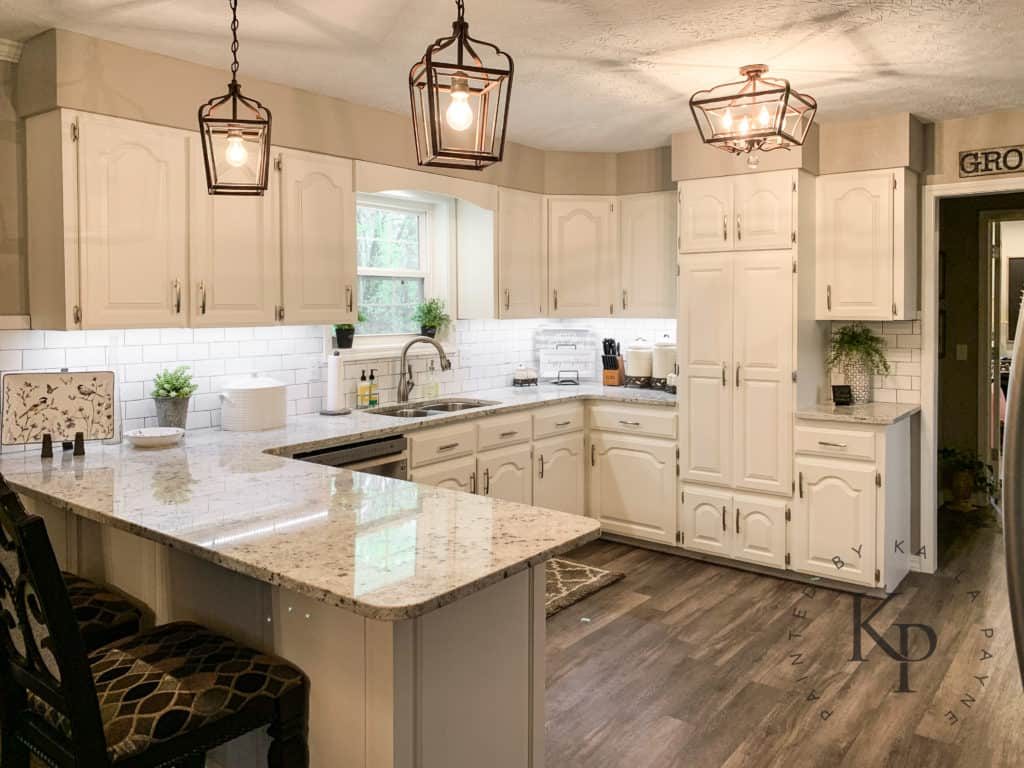
Cream alabaster cabinets paired with gold hardware create a luxurious aesthetic that speaks to both traditional and contemporary sensibilities. The warm undertones of cream alabaster provide a softer alternative to stark white, while still maintaining the material’s characteristic luminosity. This combination creates a welcoming atmosphere that can transform any kitchen into an elegant cooking and entertaining space.
The addition of gold hardware serves as more than just functional elements; it acts as jewelry for your cabinets, adding sophisticated accent points throughout the kitchen. The interplay between the cream alabaster’s subtle sheen and the metallic gleam of gold fixtures creates a dynamic visual interest that elevates the entire room’s design scheme.
3. Distressed Alabaster Finish
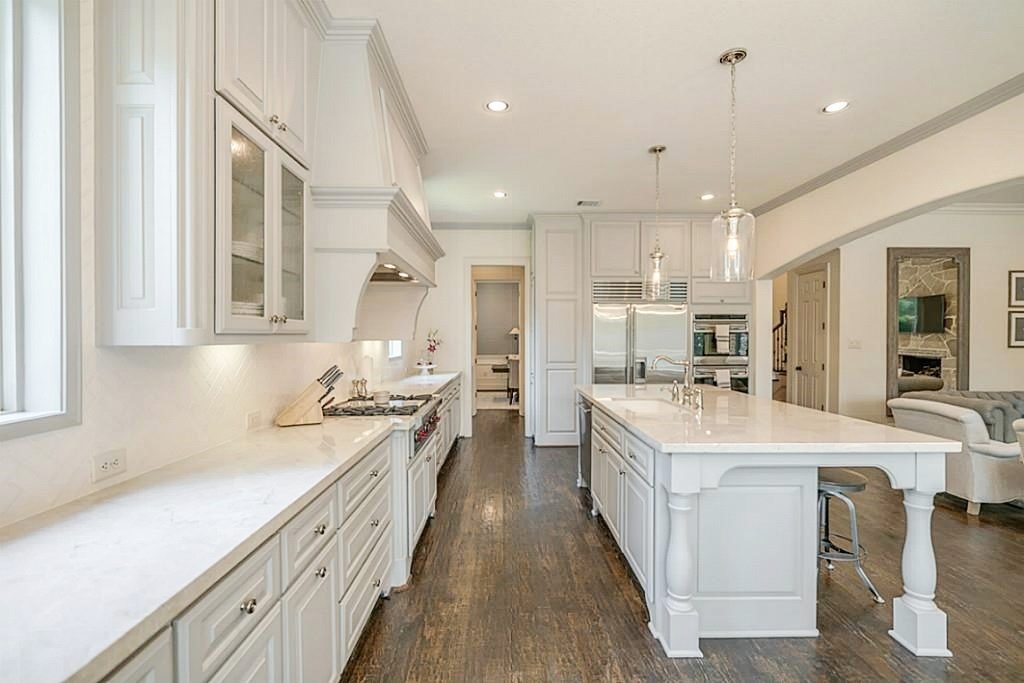
The distressed alabaster finish offers a unique twist on traditional cabinet styling, perfect for those seeking a lived-in, vintage aesthetic. This treatment involves carefully weathering the surface to create subtle imperfections that add character and depth to the cabinetry. The result is a finish that tells a story while maintaining the material’s inherent elegance.
These cabinets work particularly well in farmhouse or rustic-inspired kitchens, where their aged appearance contributes to an authentic, homey atmosphere. The distressing process actually enhances the durability of the finish by making minor wear and tear less noticeable over time, making it an excellent choice for busy households.
4. Glazed Alabaster Cabinets
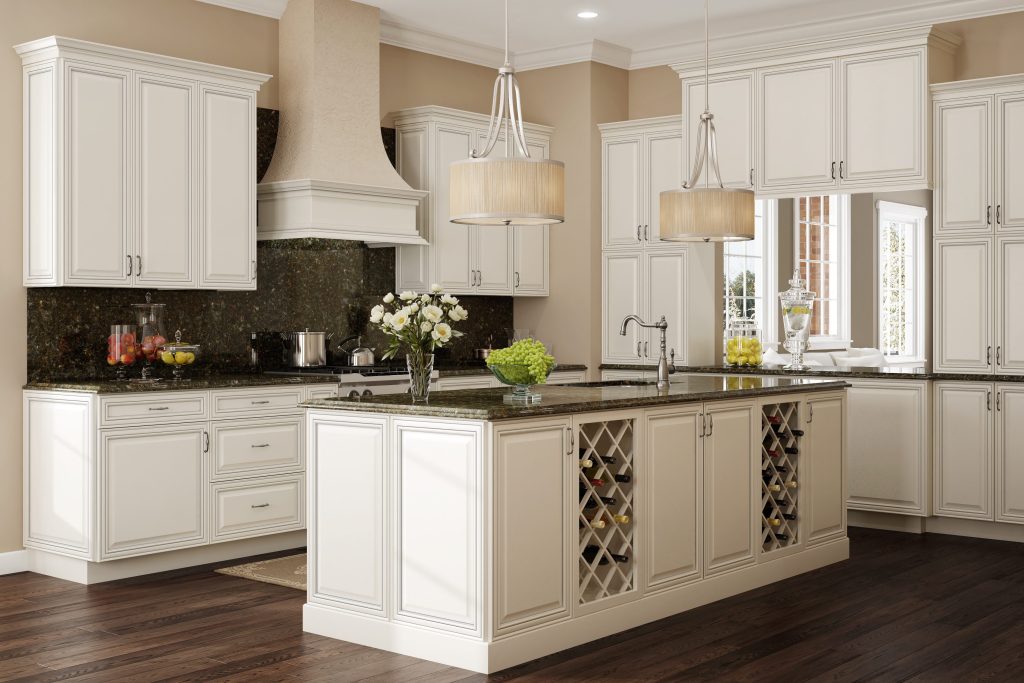
Glazed alabaster cabinets represent a sophisticated evolution in kitchen design, featuring a protective top coat that adds depth and character to the base color. The glazing process involves applying a translucent toner over the alabaster finish, which settles into the cabinet’s details and creates subtle shadows that highlight architectural elements.
This technique not only enhances the visual appeal but also provides additional protection against daily wear and tear. The glaze can be customized to create various effects, from subtle antiquing to dramatic highlighting, allowing homeowners to achieve their desired aesthetic while maintaining the classic beauty of alabaster.
5. Two-Tone Alabaster Design
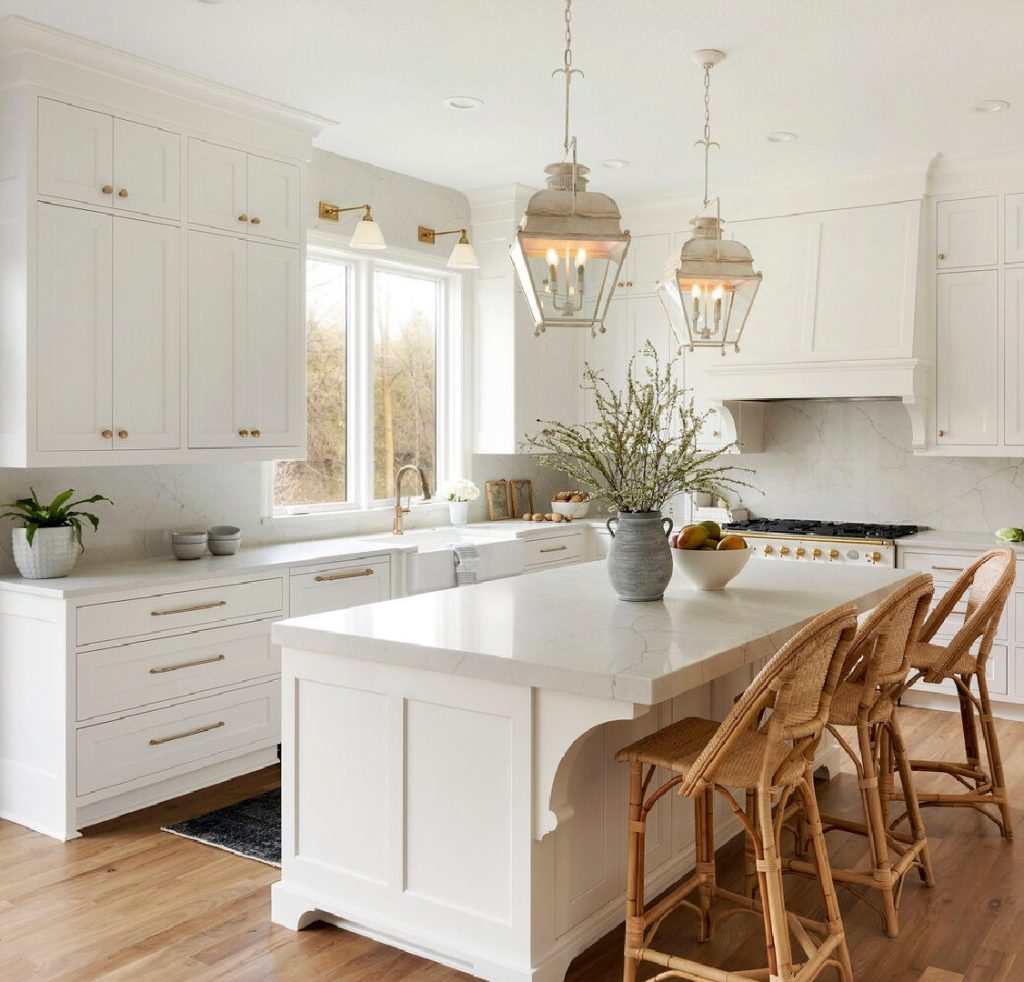
Two-tone alabaster cabinetry offers a contemporary approach to kitchen design, combining different shades or complementary colors to create visual interest and definition within the space. This design strategy often features alabaster upper cabinets paired with darker base cabinets, creating a balanced and dynamic look that can make a kitchen appear larger and more organized.
The versatility of this approach allows for creative expression while maintaining the sophisticated appeal of alabaster. It’s particularly effective in modern kitchens where the contrast between light and dark elements can define different zones and create a sense of architectural interest.
6. Alabaster with Glass Inserts
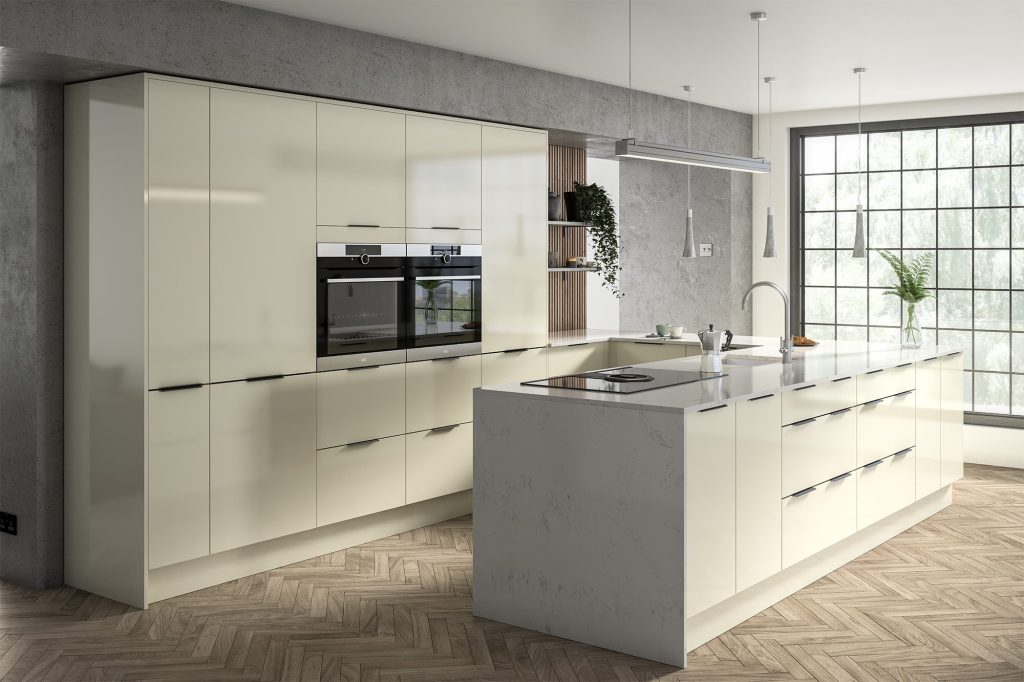
Incorporating glass inserts into alabaster cabinets creates an elegant display option while maintaining the clean, sophisticated look of the kitchen. These cabinets serve both practical and aesthetic purposes, allowing homeowners to showcase prized dishware while breaking up the solid appearance of full alabaster cabinetry.
The combination of alabaster frames with glass panels creates a lightness that can make the kitchen feel more open and airy. Various glass options, from clear to frosted, can be selected to achieve different levels of visibility and privacy while complementing the cabinet’s overall design.
Related Guide: 14 Inspiring White Kitchen Cabinets
7. Modern Slab Alabaster
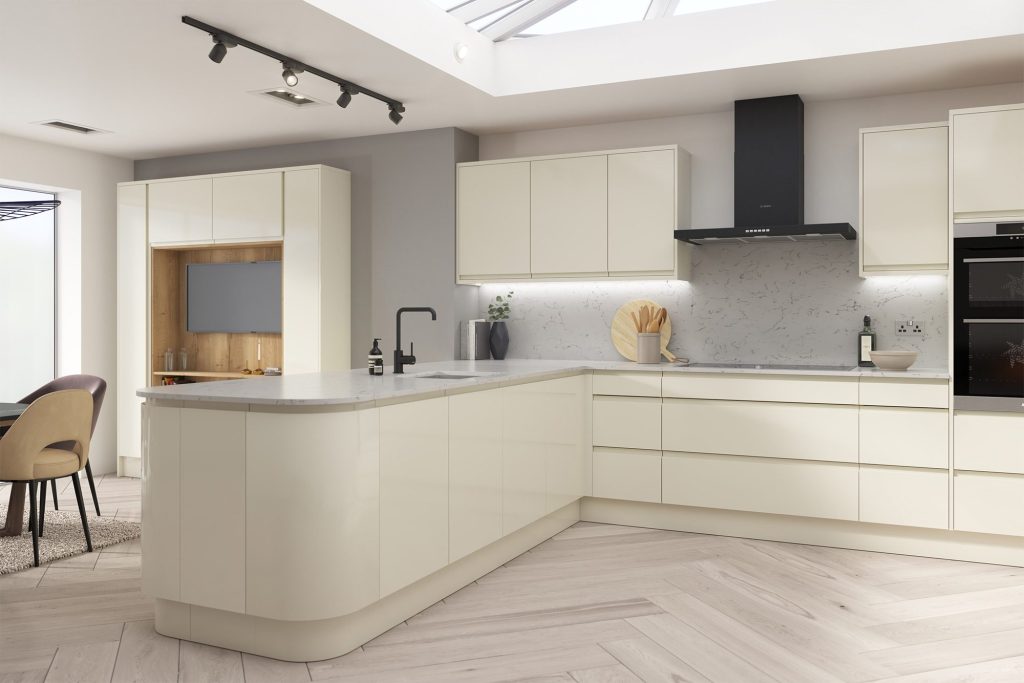
Modern slab alabaster cabinets embody minimalist design principles with their clean lines and unadorned surfaces. These cabinets feature smooth, handle-less fronts that create a sleek, contemporary appearance perfect for modern kitchens. The simplicity of the design allows the natural beauty of the alabaster finish to take center stage.
The streamlined appearance of these cabinets makes them particularly suitable for small spaces where ornate details might feel overwhelming. Push-to-open mechanisms or subtle integrated handles maintain the minimalist aesthetic while ensuring practical functionality.
8. Textured Alabaster Finish
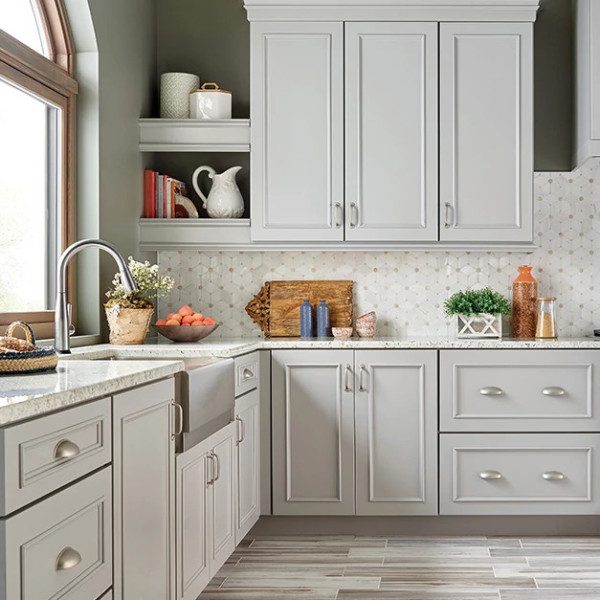
Textured alabaster cabinets add an extra dimension to kitchen design through subtle surface variations that create visual and tactile interest. These finishes can range from gentle ripples to more pronounced patterns, offering a unique take on traditional alabaster cabinetry.
The textured surface not only adds character but also helps conceal minor imperfections and fingerprints, making it a practical choice for high-traffic kitchens. The play of light on these textured surfaces creates ever-changing patterns throughout the day, adding dynamic visual interest to the space.
9. Shaker-Style Alabaster
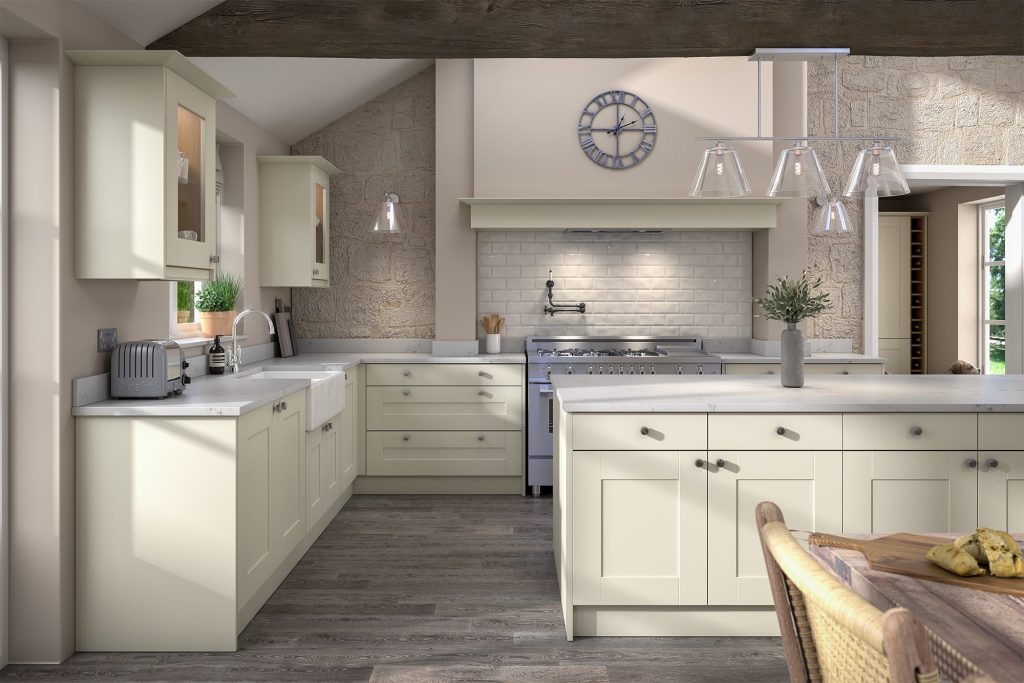
Shaker-style alabaster cabinets combine traditional craftsmanship with contemporary finish techniques. The classic five-piece door construction features clean lines and simple geometry that perfectly showcase the alabaster finish. This timeless design works well in various kitchen styles, from traditional to transitional.
The versatility of Shaker-style cabinets makes them an excellent choice for homeowners who want to maintain resale value while enjoying current design trends. The simple framework provides a perfect canvas for showcasing the subtle variations in the alabaster finish.
10. High-Gloss Alabaster
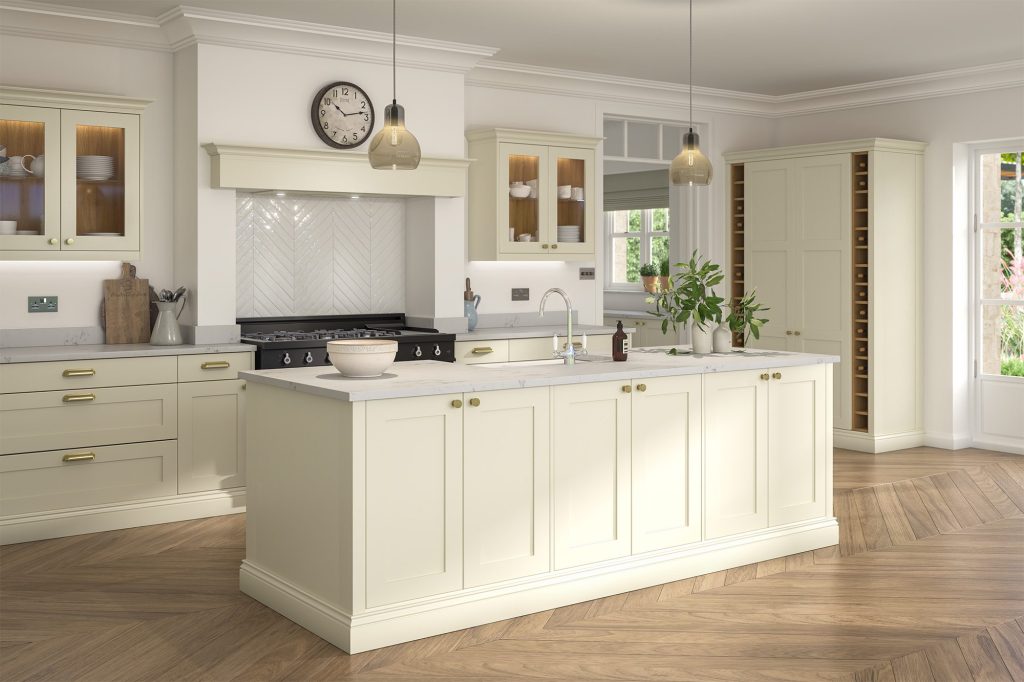
High-gloss alabaster cabinets create a stunning, reflective surface that maximizes light and creates a sense of luxury in the kitchen. The mirror-like finish amplifies natural and artificial light, making it an excellent choice for smaller kitchens or spaces with limited natural light.
The sleek, polished appearance of these cabinets requires more maintenance to keep them looking their best, but the dramatic effect they create makes them worth the extra care. They work particularly well in contemporary designs where their reflective properties can create a sense of expansiveness.
11. Alabaster with Wood Accents
Combining alabaster cabinets with wood accents creates a warm, inviting kitchen that balances modern and natural elements. This approach might include wood crown molding, open shelving, or decorative elements that add organic warmth to the clean alabaster finish.
The contrast between the smooth, light alabaster and rich wood tones creates visual interest while maintaining a cohesive design. This combination works particularly well in transitional kitchens where traditional and contemporary elements merge seamlessly.
12. Beadboard Alabaster
Beadboard alabaster cabinets offer a charming, cottage-inspired look that adds texture and character to the kitchen. The vertical grooves of the beadboard pattern create subtle shadows and highlights that add depth to the alabaster finish, while maintaining a light, bright appearance.
This style works exceptionally well in country, coastal, or cottage-style kitchens where a more casual, lived-in feel is desired. The combination of beadboard detailing with alabaster finish creates a fresh, updated take on a classic design element.
Conclusion
Alabaster kitchen cabinets continue to prove their versatility and enduring appeal in modern home design. From classic white to contemporary interpretations, these cabinets offer a perfect balance of style and functionality.
Their ability to adapt to various design aesthetics while maintaining their distinctive luminous quality makes them an excellent choice for any kitchen renovation.
Whether you prefer the simplicity of modern slab doors or the charm of beadboard details, alabaster cabinets provide a timeless foundation that can evolve with your style preferences. As kitchen design trends come and go, the enduring elegance of alabaster cabinets remains a constant, promising to enhance both the value and beauty of your home for years to come.

